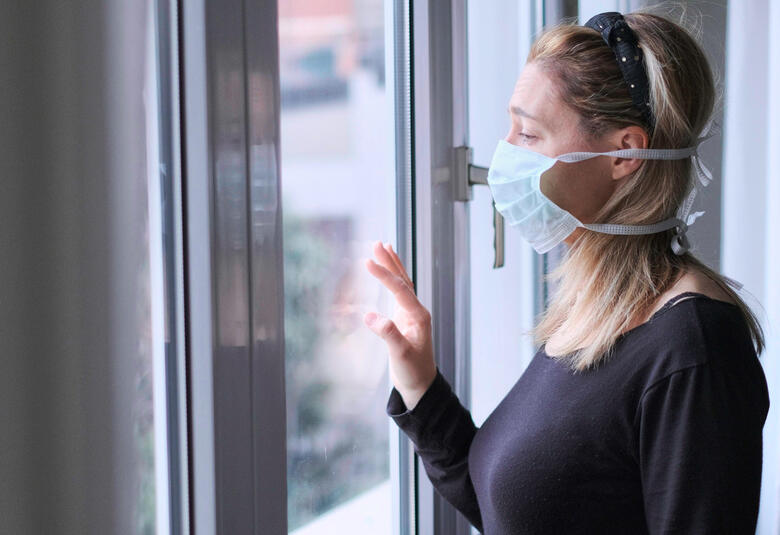Digital technology has already transformed the way we work, but, maybe surprisingly, has yet to have the same impact on the way we provide healthcare. Even the questions regarding how and indeed should this happen are still to be answered fully. Many of the challenges faced resonate with those experienced previously in the early development of medicines, including assessing efficacy, safety and deciding who will fund them. The need to bring together academics, clinicians and industry was demonstrated during an innovative interactive discussion session at ECNP2018 on the topic of ‘mHealth’ or ‘mobile health’ - the application of digital technology to the measurement of patient experience.
Use of innovative technologies to identify biological parameters
Martien Kas (The Netherlands, Groningen Institute for Evolutionary Life Sciences) introduced the PRISM project1, a multi-partner project aiming to develop a quantitative biological approach to the understanding of neuropsychiatric diseases (including major depression and schizophrenia) to facilitate the development of new therapies, with the focus on biological causation and rather than the traditional focus on clinical classification. They are using innovative technologies, such as smartphone monitoring, to deep-phenotyping a clinical cohort of patients with these disorders who share common symptoms, including social withdrawal and certain cognitive deficits.
The project aims to develop a quantitative biological approach to the understanding of neuropsychiatric diseases
Professor Kas described how a smartphone app is used for passive remote behavioral monitoring, with data on call history, SMS messaging and location, allowing assessment of individual day-night rhythms and pattern of home stay. These parameters demonstrated significant social withdrawal in patients with schizophrenia, compared to age-matched controls, with less time spent using smartphones and more time at home.
Benefits and challenges
Data can be assessed in a real-world environment
Benefits include data being assessed in a real-world environment, and the possibility of signaling relevant behavioral changes to stakeholders, e.g. triggering a treatment intervention or warning a caregiver. Future challenges will include the need for feasibility and validation studies in a variety of target groups, improved standardization, progression from obtaining data to using it to provide insights, and the impact of data privacy regulation.
Kate Saunders (Department of Psychiatry, University of Oxford, UK) went on to discuss the use of online mood-tracking in the area of psychoeducation, when interventions are resource intensive and frequently unavailable. The use of mobile technology offers the possibility of real-time data collection, and delivery of automated and individualized target interventions, with improved access and patient engagement. The SIMPLe study, in patients with bipolar disorder, combined monitoring of symptoms and signs with daily feedback2. 62% of patients were satisfied with the program, but attrition rate was high, with 30% dropping out in the first month, and only 34% completing the 6-month study. This is not unique to medical apps, with overall app use estimated as only 43% after the first month of use, and dropping to 29% by month 33.
Attrition rate for use of apps is high
Dr Saunders also discussed results using the True Colours online self-management system in patients with bipolar disorder, when a mobile app was combined with other monitoring equipment. Patient feedback emphasized the importance they placed in learning about their condition, mood stability improved during the study, even though it was observational rather than interventional, and retention rates were high at 80% at 1 year.
Wider applications of smartphones
Smartphones have wider applications in health care, beyond use as an electronic diary of symptoms and events, said Professor Ulrich Ebner-Priemer (Karlsruhe Institute of Technology, Germany). They contain sensors, which are ideal for monitoring many key symptoms and signs in mental illnesses such as bipolar disorder, including decreased need for sleep (general smartphone usage) and psychomotor agitation (GPS, acceleration).
Excellent ground truth needs to be provided by clinicians
In many studies ground truth is the bottle neck, where there is sufficient monitoring data, but lack of corroboratory evidence from independent assessment of patient status. Professor Ebner-Priemer stressed the need for patient monitoring data to be combined with clinical assessments, in adequately powered trials, to obtain robust results. He concluded that the methodology is ready, but appropriate data sets are missing, and excellent ground truth provided by clinicians is required to determine if sensor data is meaningful and to train the systems.
The industry perspective
A range of new technologies have enabled patient assessment to shift from episodic consultations to pervasive and continuous monitoring
The industry perspective was given by Vaibhav Narayan (Vice President, Research IT, Janssen Pharmaceuticals, USA). He described how a range of new technologies have enabled patient assessment to shift from episodic consultations to pervasive and continuous monitoring, and smart phone data cannot be viewed in isolation. Other advances include on-demand genomics, on-body physiology, and point of need biochemistry. The key will be combining these different types of data and sharing the full spectrum of benefit with patients to encourage their participation.
Combine different types of data and share the full spectrum of benefit with patients to encourage participation
One framework that industry uses, said Vaibhav Narayan, considers the part digital technologies could play in the three phases of drug development. ‘Towards the pill’ e.g. supporting clinical trials; ‘around the pill’ e.g. creating value for a drug brand or class by prediction of relapse and allowing treatment optimization; and ‘beyond the pill’ e.g. disease level impact such as patient support tool. An alternative framework is considering a spectrum from wellness to chronic disease, as the patient moves from low risk, through high risk and early disease, to chronic disease. The aim is continuous engagement across the whole of this journey, with the potential for digital solutions to be used pre-diagnosis (e.g. risk tracking), post-diagnosis (e.g. disease progression prediction) and post-treatment (e.g. efficacy monitoring). From an industry point of view, value for all parties involved will be crucial, including ensuring a sustainable business model, and robust framework of scientific evidence.
The aim is continuous engagement across the journey of disease, with the potential for digital solutions to be used pre-diagnosis, post-diagnosis, and post-treatment
What do patients think?
The final perspective, provided by Dr Lior Carmi (Tel Aviv University, Israel) was that of the patient, as he presented feedback from the ongoing iFeel depression study. Patients’ main concerns were regarding anonymity (what would you need to know about me, and who would know about me?), compliance (what would I need to do?), and technical issues (would it affect my battery life?), whilst clinicians wanted an interface which was simple to access and allowed immediate interpretation of results.
The session ended with lively discussion between audience members and the panel of speakers, which highlighted the importance of patient engagement, need for proper regulation, and awareness of potential pitfalls, whilst embracing the opportunities mHealth offers for patients and clinicians.




